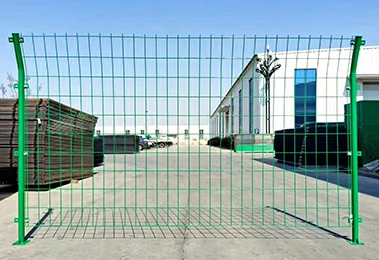 TEL:
+86-13102802206
TEL:
+86-13102802206
 Email:
fencenetting@china.com
Email:
fencenetting@china.com
 Language
Language
 TEL:
+86-13102802206
TEL:
+86-13102802206
 Email:
fencenetting@china.com
Email:
fencenetting@china.com
 Language
Language


The Importance of Gabion Lacing Wire in Construction and Landscaping
Gabions, which are wire mesh containers filled with rock, concrete, or other materials, have become increasingly popular in construction and landscaping due to their versatility and durability. One critical component that ensures the effectiveness and longevity of gabions is the gabion lacing wire. This specialized wire plays a significant role in the overall structure, making it essential to understand its significance and applications.
Gabion lacing wire is designed specifically for securing the sides of gabion baskets together. Typically made from high-quality galvanized steel, it exhibits excellent resistance to rust and corrosion, critical for ensuring that the gabion structures can withstand harsh environmental conditions. The durability of the lacing wire is essential, as gabions are often used in areas exposed to moisture, such as riverbanks, slopes, and coastal regions.
One of the primary functions of gabion lacing wire is to maintain the integrity of the gabion's structure. When filled with rocks or other materials, gabions can be quite heavy, and without proper lacing, the baskets may become loose, leading to a collapse of the wall or structure. The lacing wire acts as a binding agent, holding the individual panels of the gabion together firmly, ensuring that they do not shift or open under pressure.
In construction applications, gabions are often used for erosion control, retaining walls, and sound barriers. The lacing wire contributes to the stability and strength of these structures, providing essential support that helps them withstand natural elements such as wind, rain, and water flow. For instance, in areas prone to flooding, gabion walls secured with robust lacing wire can help divert water away from critical infrastructure, reducing the risk of damage.

Landscapers and architects also appreciate the aesthetic appeal of gabions. When filled with decorative stones or other materials, they can add a pleasing visual element to outdoor spaces while functioning effectively in soil stabilization and landscaping. The use of high-quality lacing wire complements this aesthetic by ensuring that the gabion retains its shape and structure, preserving its appearance over time.
When it comes to installation, using gabion lacing wire is straightforward. The process typically involves threading the wire through the pre-drilled holes or mesh of the gabion panels, securing them tightly using a mechanical crimping tool or by hand. This simplicity makes gabions an attractive option for DIY projects, as they can be assembled easily with the right tools and materials. The ability to use lacing wire effectively can determine the success of the installation, highlighting the importance of choosing the right type and gauge of wire for the specific application.
Moreover, the environmentally friendly nature of gabions further enhances the value of using lacing wire. Since gabions can be filled with locally sourced materials, they reduce transportation costs and carbon footprints associated with traditional building materials. The lacing wire, being recyclable, adds to the overall sustainability of gabion construction, aligning with modern eco-friendly practices.
In conclusion, gabion lacing wire is a vital component of gabion structures, offering strength, stability, and longevity. Its durability against corrosion ensures that gabions can withstand the test of time, making them a reliable choice for various construction and landscaping applications. By understanding and utilizing gabion lacing wire effectively, builders and landscapers can create beautiful, functional, and environmentally friendly structures that serve multiple purposes in both urban and natural settings. As interest in sustainable construction practices continues to grow, the relevance of materials like gabion lacing wire will only increase, solidifying its place in the future of construction and landscaping.